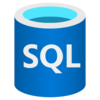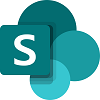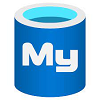Note
Access to this page requires authorization. You can try signing in or changing directories.
Access to this page requires authorization. You can try changing directories.
Find a data connector from Microsoft or a partner that works with an indexer to simplify data ingestion into a search index.
Note
The connectors mentioned in this article represent one method for indexing data in Azure AI Search. You also have the option of developing your own connector using the Push REST API or An Azure SDK.
Generally available data sources by Azure AI Search
Pull in content from other Azure services using indexers and the following data source connectors.
Azure Blob Storage
Extract blob metadata and content, serialized into JSON documents, and imported into a search index as search documents. Set properties in both data source and indexer definitions to optimize for various blob content types. Change detection is supported automatically.

Azure Cosmos DB for NoSQL
Connect to Azure Cosmos DB through the SQL API to extract items from a container, serialized into JSON documents, and imported into a search index as search documents. Configure change tracking to refresh the search index with the latest changes in your database.

Azure SQL Database
Extract field values from a single table or view, serialized into JSON documents, and imported into a search index as search documents. Configure change tracking to refresh the search index with the latest changes in your database.

Azure Table Storage
Extract rows from an Azure Table, serialized into JSON documents, and imported into a search index as search documents.

Azure Data Lake Storage Gen2
Connect to Azure Storage through Azure Data Lake Storage Gen2 to extract content from a hierarchy of directories and nested subdirectories.

Logic app connectors (preview)
Pull in content using logic app workflows and the following supported data sources.
SharePoint
By Logic Apps
SharePoint helps organizations share and collaborate with colleagues, partners, and customers. You can connect to SharePoint Online or to an on-premises SharePoint 2016 or 2019 farm using the On-Premises Data Gateway to manage documents and list items.

OneDrive
By Logic Apps
Connect to OneDrive to manage your files. You can perform various actions such as upload, update, get, and delete on files in OneDrive.
OneDrive for Business
By Logic Apps
OneDrive for Business is a cloud storage, file hosting service that allows users to sync files and later access them from a web browser or mobile device. Connect to OneDrive for Business to manage your files. You can perform various actions such as upload, update, get, and delete files.
Azure File Storage
By Logic Apps
Microsoft Azure Storage provides a massively scalable, durable, and highly available storage for data on the cloud, and serves as the data storage solution for modern applications. Connect to File Storage to perform various operations such as create, update, get and delete on files in your Azure Storage account.
Azure Queues
By Logic Apps
Azure Queue storage provides cloud messaging between application components. Queue storage also supports managing asynchronous tasks and building process work flows.
Service Bus
By Logic Apps
Connect to Azure Service Bus to send and receive messages. You can perform actions such as send to queue, send to topic, receive from queue, receive from subscription, etc.
Preview data sources by Azure AI Search
New data sources are issued as preview features. Sign up to get started.
Fabric OneLake files
Connect to a OneLake lakehouse to extract supported files content from a hierarchy of directories and nested subdirectories.

Azure Cosmos DB for Apache Gremlin
Connect to Azure Cosmos DB for Apache Gremlin to extract items from a container, serialized into JSON documents, and imported into a search index as search documents. Configure change tracking to refresh the search index with the latest changes in your database.

Azure Cosmos DB for MongoDB
Connect to Azure Cosmos DB for MongoDB to extract items from a container, serialized into JSON documents, and imported into a search index as search documents. Configure change tracking to refresh the search index with the latest changes in your database.

SharePoint
Connect to a SharePoint site and index documents from one or more document libraries, for accounts and search services in the same tenant. Text and normalized images are extracted by default. Optionally, you can configure a skillset for more content transformation and enrichment, or configure change tracking to refresh a search index with new or changed content in SharePoint.

Azure MySQL
Connect to MySQL database on Azure to extract rows in a table, serialized into JSON documents, and imported into a search index as search documents. On subsequent runs, assuming High Water Mark change detection policy is configured, the indexer takes all changes, uploads, and delete and reflect those changes in your search index.

Azure Files
Connect to Azure Storage through Azure Files share to extract content serialized into JSON documents, and imported into a search index as search documents.

Data sources from our partners
The following Microsoft partners offer custom third-party data connectors. Each partner implements and supports these connectors, which aren't part of Azure AI Search built-in indexers. Before you use a custom connector, review the partner's licensing and usage instructions.